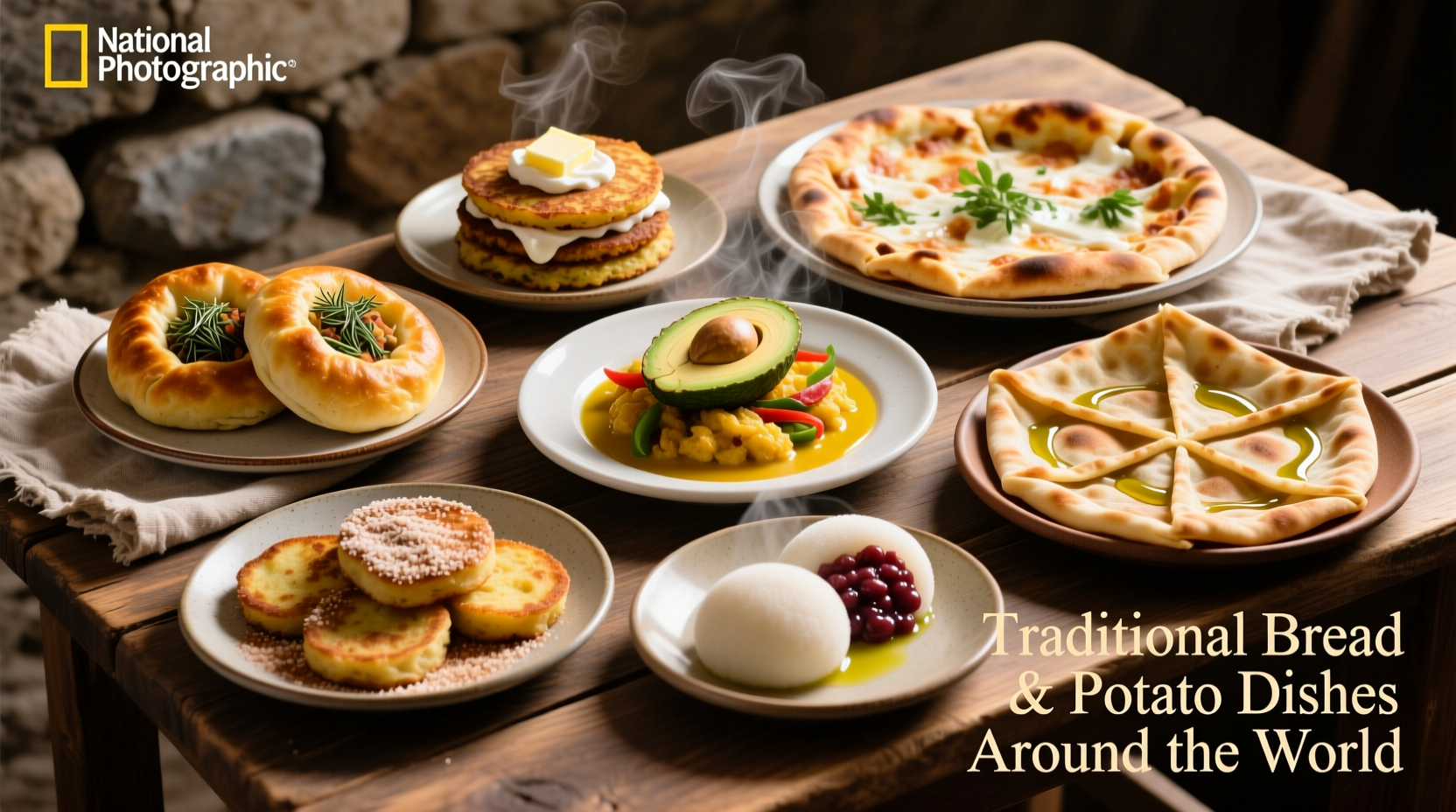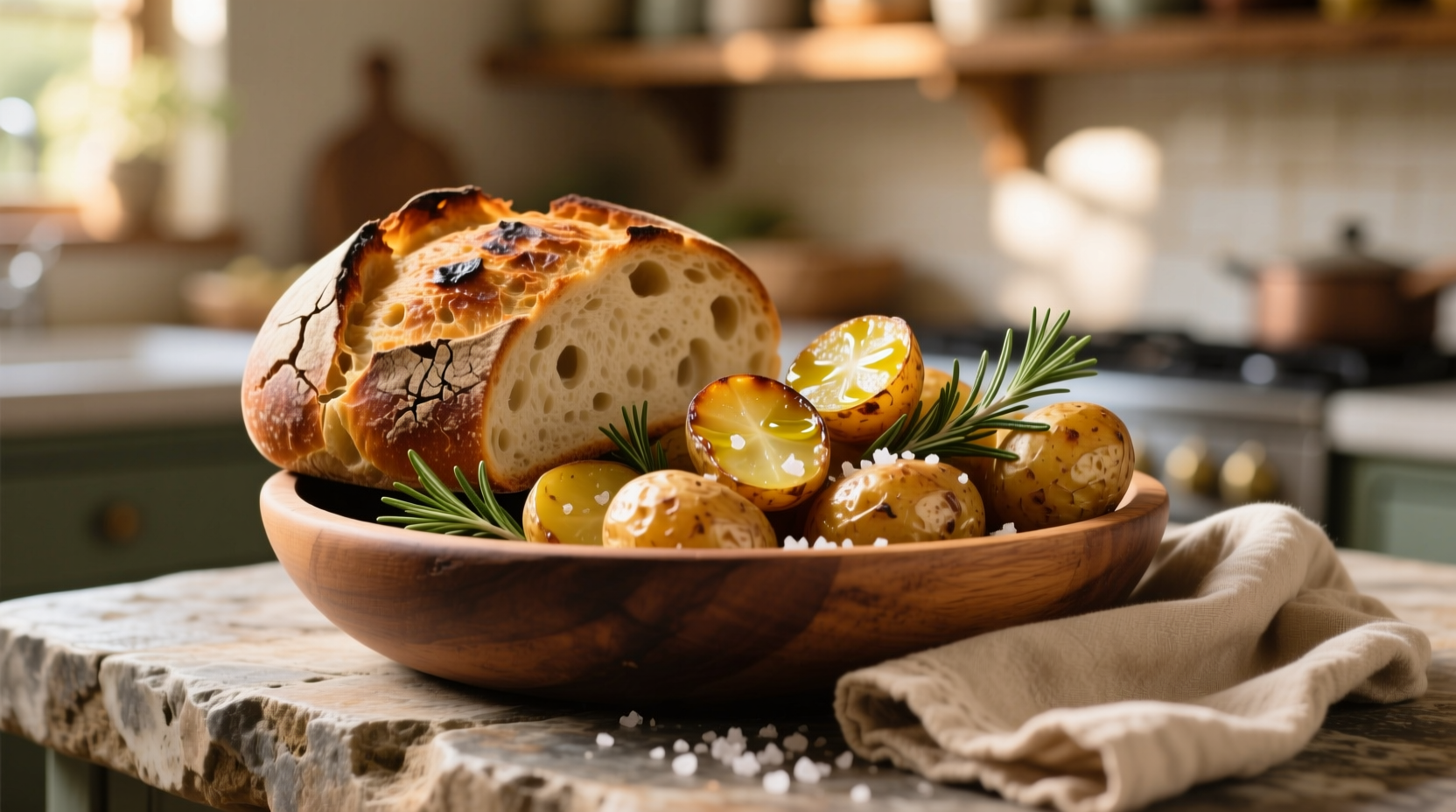Yes, bread and potato are nutritionally compatible and form the foundation of countless traditional dishes worldwide. Both provide essential carbohydrates, with potatoes offering more vitamin C and potassium while bread typically contains more fiber and B vitamins. When combined thoughtfully, they create balanced meals that have sustained cultures across Europe, Asia, and the Americas for centuries.
Why Bread and Potato Make a Powerful Culinary Pairing
For generations, home cooks and professional chefs alike have relied on the dynamic duo of bread and potato. This isn't just culinary tradition—it's nutritional science in action. Let's explore why these two staples work so well together and how to maximize their benefits in your kitchen.
Your Complete Guide to Combining Bread and Potato
Understanding the Nutritional Synergy
While both bread and potato serve as carbohydrate sources, they offer complementary nutritional profiles that create a more complete meal when combined. Potatoes provide significantly more vitamin C and potassium than most bread varieties, while bread typically contributes more dietary fiber and B vitamins.
| Nutrient | White Potato (1 medium) | Whole Wheat Bread (1 slice) | Combined Benefit |
|---|---|---|---|
| Calories | 163 | 90 | Balanced energy release |
| Vitamin C | 28mg (47% DV) | 0mg | Enhanced immune support |
| Potassium | 926mg (26% DV) | 82mg (2% DV) | Improved electrolyte balance |
| Dietary Fiber | 3.8g | 2g | Optimal digestive health |
This nutritional complementarity explains why cultures worldwide have developed traditional dishes combining these ingredients. According to USDA FoodData Central, the combination provides more complete nutrition than either food alone when prepared using traditional methods.
Global Traditions: How Cultures Pair Bread and Potato
The marriage of bread and potato spans continents and centuries. Let's examine how different culinary traditions have perfected this pairing:
European Heritage Dishes
In Ireland, the classic boxty combines mashed potatoes with flour to create a hearty pancake, while Scotland's tattie scone blends potato with oatmeal. Across the English Channel, French pommes boulangère features thinly sliced potatoes baked with onions and broth between layers of bread.
Eastern European Comfort Food
Polish placki ziemniaczane (potato pancakes) often served with rye bread, and Russian draniki showcase how these cultures maximize flavor and nutrition through this pairing. Historical records from the Polish Academy of Sciences show these combinations emerged during periods of agricultural scarcity, demonstrating their practical nutritional wisdom.

Modern Pairing Strategies for Home Cooks
While traditional dishes provide inspiration, contemporary cooking offers innovative ways to combine these staples effectively:
Texture Contrast Techniques
Create culinary interest by contrasting textures:
- Top crusty sourdough with creamy mashed potatoes for breakfast
- Use day-old bread as croutons in potato soup for added crunch
- Make potato bread pudding with stale bread and sweet potatoes
Nutritional Optimization Tips
Maximize the health benefits of this pairing:
- Choose whole grain breads to increase fiber content
- Leave potato skins on for additional nutrients
- Add herbs and spices instead of excess fats for flavor
- Pair with protein sources for complete meals
When Bread and Potato Combinations Fall Short
Not all pairings work equally well. Understanding these limitations helps avoid culinary missteps:
Context Boundaries for Successful Pairings
- Carbohydrate overload: Avoid combining refined white bread with fried potatoes for those managing blood sugar
- Texture conflicts: Soft dinner rolls don't complement creamy potato soup as well as crusty bread
- Nutritional imbalance: Skip additional starches when serving potato salad with bread
- Dietary restrictions: Those on low-FODMAP diets should monitor portions of both ingredients
Research from the American Journal of Clinical Nutrition indicates that combining these starches with protein and vegetables creates more balanced meals that support sustained energy levels throughout the day.
Debunking Common Misconceptions
Several myths persist about combining bread and potato:
- "They're both starches so they're unhealthy together" - While both contain carbohydrates, they offer different nutritional profiles that complement each other
- "This combination causes weight gain" - Portion control and preparation methods matter more than the combination itself
- "Potatoes lose nutrients when paired with bread" - No scientific evidence supports this claim
Practical Applications for Your Kitchen
Ready to put this knowledge into practice? Try these simple approaches:
Breakfast Solutions
Create a balanced morning meal by topping whole grain toast with mashed sweet potatoes and a sprinkle of cinnamon. This combination provides sustained energy release thanks to the fiber from both ingredients.
Lunchtime Efficiency
Transform leftover roasted potatoes into a satisfying lunch by serving them on hearty rye bread with a dollop of Greek yogurt and fresh herbs. This approach minimizes food waste while maximizing nutrition.
Dinner Innovation
Instead of traditional stuffing, try a potato and bread casserole with herbs and vegetables for a nutrient-dense side dish that complements roasted meats beautifully.
Special Dietary Considerations
For those with specific dietary needs:
- Diabetes management: Pair sourdough bread (lower glycemic index) with cooled potatoes (increased resistant starch)
- Weight management: Focus on portion control and preparation methods—baked instead of fried
- Digestive health: Include both ingredients with their skins for maximum fiber content
The Academy of Nutrition and Dietetics notes that when prepared using healthy cooking methods, bread and potato combinations can be part of balanced meal plans for various dietary needs.
Putting It All Together: Your Action Plan
Start incorporating these principles today with these simple steps:
- Experiment with one traditional bread and potato dish from a different culture each month
- Track how different combinations affect your energy levels and satiety
- Modify recipes to include whole grain breads and keep potato skins on
- Balance your plate with ¼ bread, ¼ potatoes, ½ vegetables/protein
Remember that the quality of ingredients matters—choose artisanal breads with minimal ingredients and fresh, unprocessed potatoes for maximum nutritional benefit. By understanding the complementary nature of these staples, you can create satisfying, nutritious meals that honor culinary tradition while supporting modern health goals.











 浙公网安备
33010002000092号
浙公网安备
33010002000092号 浙B2-20120091-4
浙B2-20120091-4